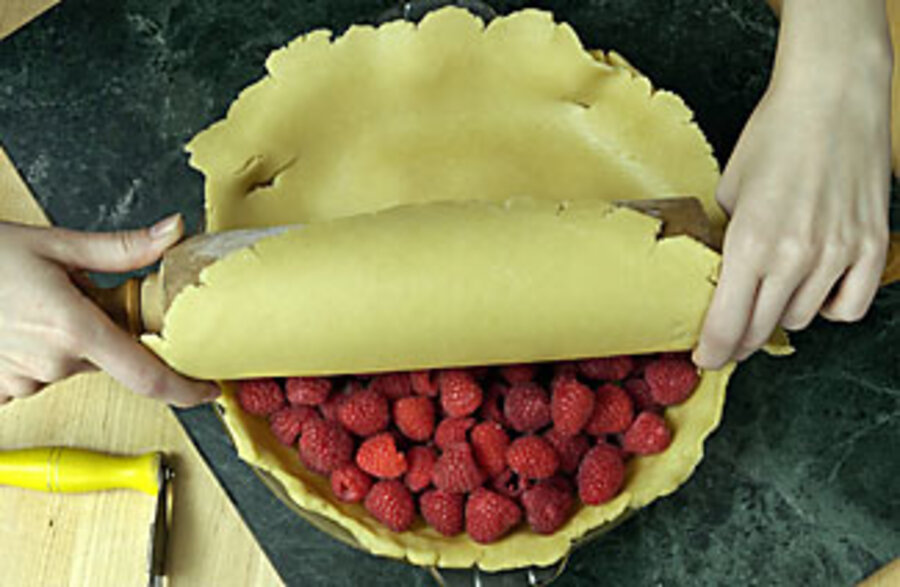Pie crust: a baker's triumph
As a home baker, I love receiving compliments on the cakes and cookies I pull out of my oven. But nothing pleases me quite as much as hearing praise for my pie crust. That's because I'm a late bloomer when it comes to pies. Whipping up batches of gingersnaps and lemon bars has always come naturally to me. But mastering the fine art of flaky pie crust? That was something I once considered an unattainable feat.
After all, I had read book after book cautioning fledgling bakers of the possible pitfalls awaiting the unwary. I knew before ever attempting my first crust what I was up against. "Don't handle the dough more than necessary. Don't add too much water. And don't reroll the dough," were only the beginning of the seemingly endless list of perils I was warned about.
Forgiveness, I learned, was not an attribute of pie crusts. They seemed to demand obedience to rigid rules or all efforts were doomed to failure.
As much as I enjoyed eating these flaky pastries paired with creamy coconut and juicy apple fillings, I'll admit I let the idea of tackling pie crusts continue to intimidate me. Consequently, I limited my kitchen adventures to less challenging pursuits such as brownies and banana bread and contentedly skirted the issue.
Such was the state of affairs until I moved to Montana some 20 years ago. That's when I discovered that most home bakers I met made huckleberry or rhubarb pie – at the very least – and did a darned good job of it. In addition, these bakers usually acted like mixing pastry dough was as easy as eating dessert.
Ask about their crust recipe, and the response – more often than not – was a puzzled look that translated to the equivalent of "What's hard about pie crust? You just mix flour with shortening, salt, and water." Right.
Then, one memorable day, a generous-hearted neighbor shared her favorite pie crust recipe with me. Although I knew she relied on that recipe so much she had taped it to the inside door of her kitchen cupboard, it still took some convincing for me to become a believer.
In all my pie crust research, I had yet to encounter anything like this. Not only did the recipe produce five pie shells, it also called for vinegar and an egg. Those two ingredients seemed so odd to me, I filed away the index card figuring I'd probably never bother with it. A couple of years and many pastry experiments later, I asked a blue-ribbon winner from the Montana State Fair for her crust recipe. To my surprise, she recited verbatim the ingredients my neighbor had given me. And shortly after that, I noticed the same recipe in the pages of a cookbook that featured favorites from a Wyoming guest ranch.
By that time, I felt I was receiving a message about this particular pie crust. Granted, it didn't have the sophisticated air of the French short pastry known as pâte brisée. Nor did it have the comforting hominess of a lard-shortened crust. But I was finally willing to put it to the test.
To say it was the most compliant pie dough I ever had the pleasure of rolling out would not overstate the case. It was so cooperative, it gave me the confidence I needed to bake everything from butterscotch pie to quiche Lorraine and feel satisfied with the results. Thanks to the tenderizing power of the vinegar and egg, my pie baking finally migrated from the realm of the impossible dream to an everyday accomplishment.
Although I occasionally try other crust recipes, I always return to this one. Aside from knowing how dependable it is, I appreciate having extra pie shells to stash in the freezer. That makes it a cinch to fix a chocolate silk or pumpkin chiffon pie anytime. And whenever my dinner guests take their first bite of pie, they typically comment on the flakiness of the crust and then request the recipe, which I happily share along with the story of how I acquired it. But I never apologize for the presence of the vinegar or the egg. They could be a pie baker's best friends.





